Incredible treasure discoveries people couldn't keep
Finders, but not keepers

A huge Viking treasure chest

The Cuerdale Hoard was found in 1840 by two workmen by the River Ribble at Cuerdale near Preston in Lancashire, England. The largest Viking treasure found inside of Europe, the buried lead chest contained over 8,600 priceless items including English, Frankish, Scandinavian and Kufic coins and Viking rings, amulets and armlets. Small bone pins suggested the treasure had been parceled and collected over time. Irish-Norse and newly minted York Viking coins indicate the chest was buried between 905 and 910.
A huge Viking treasure chest

Gold bars in the garden

In Roanne near Lyon in France, a couple who bought their home in 2002 discovered six gold bars in their garden in 2009. In 2013 they stumbled on a further 22 bars, bringing the total value of their find to €800,000 ($860k). The couple declared the find to the police, mayor and the Banque de France and claimed they were told they could keep the treasure. However, the bank noticed an influx of money into their accounts and began to make enquires. It later became apparent that the couple had sold 23 of the 28 bullions and deposited the cash.
Gold bars in the garden

The widow to the seller of the property came forward, claiming that she and her children were the rightful owners of the gold as they were the previous owners of the property. In 2015, the court awarded the remaining gold bars, along with the money from the sale of 15 of them, to the widow and her children. The Supreme Court upheld the decision again in 2017. According to French lawyer Maître Samira Meziani, speaking to newspaper LCI: “The treasure must be shared between the discoverer – who is legally called the inventor of the treasure – and the owner of the premises, according to article 716 of the civil code”.
Depression-era cash and weapons in the walls

After purchasing a dilapidated property in Phoenix, Arizona, Sarina Jennings and Clinton McCallum hired a company called Trinidad Builders to remodel it in 2008. During the renovations, a worker discovered artillery ammo cans stuffed with Depression-era dollars and weapons in the kitchen and bathroom walls, worth a total of $500,000. This was the result of the previous occupier Robert Spann's habit of hiding cash in the walls of the building. The owner of Trinidad Builders took the finds off his worker and hid it from the homeowners, but the employee told Jennings and McCallum about the discovery, and they called the police.
Depression-era cash and weapons in the walls

After police seized the treasure, there was a legal debate as to who should keep the cash – Jennings and McCallum or the company. Then Karen, the daughter of previous owner Robert Spann, came forward and claimed that the money was the righful property of herself and her sister Kim. The judge determined the daughters were the rightful inheritors to the money, since it had been mislaid and not abandoned, and both the builder and homeowners were forced to return everything they found.
Gold bars found by the builders

Builders were leveling the ground for an extension in the Eure region in Normandy, France (pictured) in 2014 when their mechanical shovel struck gold. They removed 16 gold bars and around 600 gold coins (dated between 1924 and 1927) in total worth around €900,000 ($969k). The builders sat on the treasure for a short time before they decided to sell it to a coin collector. But French tax authorities became suspicious when one builder deposited large sums into his bank account.
Gold bars found by the builders

The treasure was likely buried during World War II. The owner of the property did not discover any details about the treasure until contacted by the police, and later told French journalists: “I remember saying to them as a joke 'If you find treasure, let me know!', but I had no idea.” The builders were charged with theft and the coin collector was charged with handling stolen goods, which he denied.
Viking artifacts found by metal detectorists
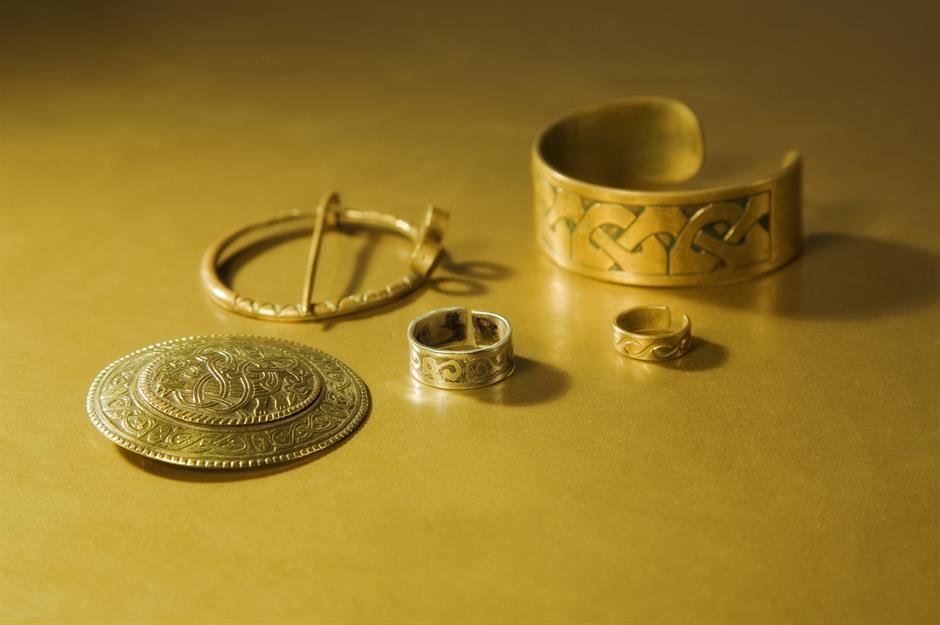
Two metal detectorists, George Powell and Layton Davies, received jail sentences of 10 years and eight and a half years respectively in November 2019, after they failed to declare the Viking treasure trove they discovered in a field near Leominster, England in June 2015, and instead started to sell it off on the black market. The hoard of 300 coins, bracelets and a crystal ball pendant are thought to have been buried 1,100 years ago by a Viking warrior and includes five rare 'Two emperors' coins depicting King Alfred the Great sitting with monarch Ceolwulf II of Mercia, thought to be worth £50,000 ($62k) each. The trove has a total estimated value of £3 million ($3.7m).
Viking artifacts found by metal detectorists

Powell and Davies weren't the only ones involved in the deception. Simon Wicks, who sold some of the coins, was jailed for five years and Paul Wells, another coin collector who was also convicted of concealing the find, received a suspended 12-month sentence for concealment. If Powell and Davies had reported their invaluable find they would have received a £500,000 ($617k) finder's fee and been celebrated for their contribution to history. Instead, as much as 90% of the hoard remains missing, presumably in private hands.
Sunken coins found in a shipwreck

In 2007 American shipwreck hunter Bobby Pritchett and his company Odyssey Marine Exploration, famed for their finds off the coast of Florida, discovered $500 million-worth of silver and gold coins scattered on the ocean floor near Gibraltar off the coast of Spain. The company used hi-tech robots to search the sea bed before flying nearly 600,000 recovered silver and gold coins and other artifacts back to Florida, much to the Spanish government's dismay. In fact, the controversial transportation of the treasure to America was covertly named The Black Swan Project to conceal its whereabouts. The coins, minted in Lima, Peru, match cargo believed to have been carried by the Spanish ship Nuestra Señora de las Mercedes, which sunk off the coast of Cape Mary, Portugal in 1804. The Spanish government sued Odyssey as it believed the ship to be a naval boat rather than the merchant ship.
Sunken coins found in a shipwreck

After a five-year legal battle a judge ruled that the coins belonged to Spain and the descendants of the 250 Spanish sailors who went down with the ship. Pritchett was ordered to return around 600 barrels of coins within 10 days. Today 400,000 coins belonging to the Mercedes ship remain missing and waiting to be discovered.
16th-century shipwreck treasure

It's not the only time Pritchett has caused controversy and been forced to hand back treasure. In 2016 Pritchett and his team discovered several historic artifacts, including 16th-century cannons and a marble column emblazoned with the French coat of arms, among several shipwrecks off the north coast of Florida. One of these ships is believed to be La Trinité, which sailed from the New World to form colonies in America as part of a fleet led by explorer Jean Ribault between 1562 and 1565.
16th-century shipwreck treasure
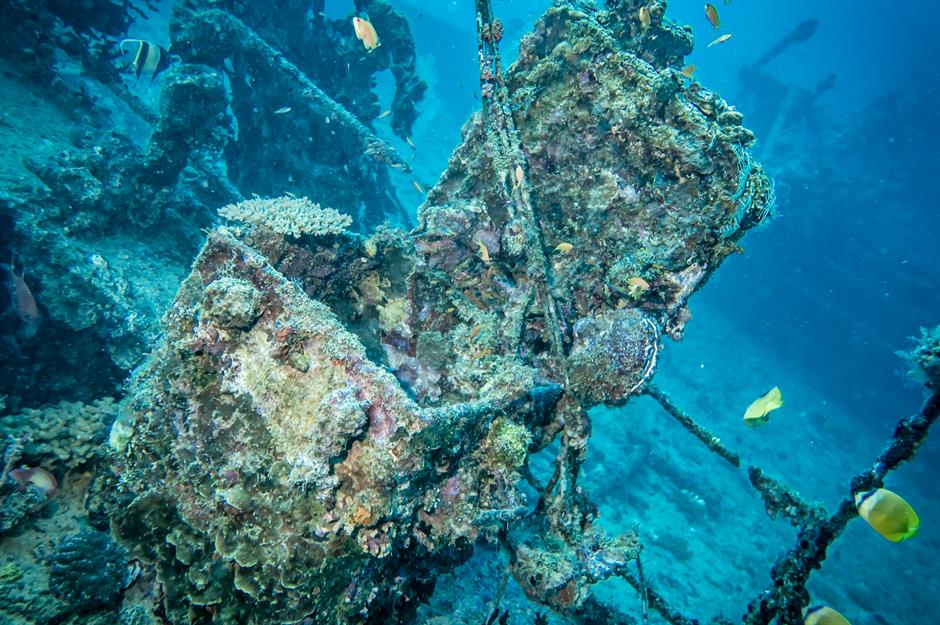
Pritchett obtained 14 different permits to start excavating the remains, but the Sunken Military Craft Act of 2004 gives France rights over shipwrecks even after nearly five centuries. Prichett's Global Marine Exploration tried to persuade the court that the cannons and collectibles had sunk on Spanish ships which raided the French fleet. Not exactly the argument you'd expect between treasure salvagers and archeologists. In 2018, the federal district ruled in favor of France and declared the remains those of La Trinité.
Hoard of gold found by scuba divers

A member of a diving group in Caesarea, Israel spotted something shiny on the seabed during a dive in February 2015. At first the diver thought it might be a glimmer from a candy wrapper, but in fact he had found a gold coin with Arabic script on both sides. The divers immediately alerted the authorities, and worked to help them recover a total of 2,000 coins, dating back some 1,600 years.
Hoard of gold found by scuba divers

The 24-carat coins are in near perfect condition, and the Israeli Antiques Authority described the worth of the cache "so valuable that it's priceless". The haul is thought to be from a shipwreck and is officially the property of the state, and there is no finder's fee under the jurisdiction of the Israeli State. However, the divers have since worked with the Antiques Authority to search for more shipwrecks along Israel's coast.
Original North Carolina Bill of Rights
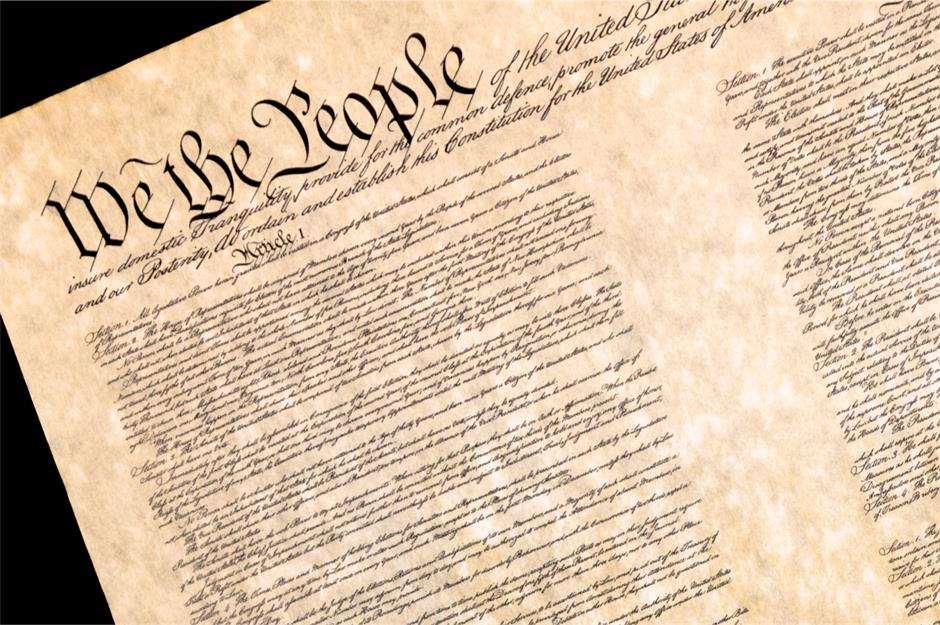
Of the 13 handwritten copies of the US Bill of Rights given to existing states and one to the central government in 1789, four are currently still missing. Historians believe a soldier stole North Carolina's copy as a souvenir in 1865, and then pawned the bill to a grain salesman in Ohio for $5 (the equivalent of $75 in today's money). Several attempts to force the return of the document failed over the following 140 years, until the FBI finally seized it in a sting in March 2003...
Original North Carolina Bill of Rights
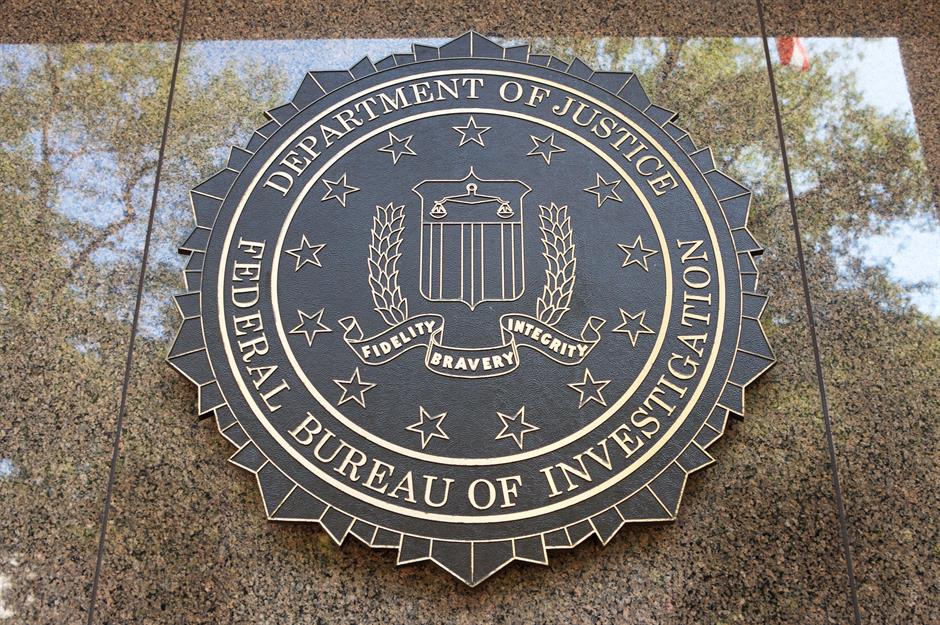
The Bill of Rights was found and purchased in an antique store in New York by Connecticut-based Antiques Roadshow TV show regular Wayne Pratt in 2000. In 2002, he tried to sell the paper to the National Constitutional Center in Philadelphia for $5 million, where he met undercover FBI agents. Pratt relinquished the bill to avoid criminal charges, although it wasn't until 2008 that the Bill of Rights was officially declared property of North Carolina state.
Hundreds of treasures stolen by the Nazis

The Gurlitt Trove or Munich Art Hoard are the names of a collection of more than 1,500 paintings found in Cornelius Gurlitt's house in Munich, Germany during a police raid in 2002. Cornelius likely acquired the paintings from his father Hildebrand Gurlitt, an art dealer who exploited the Nazi policy to dispose of "degenerate" modern artwork in order to amass his own collection. Works of art by Matisse, Picasso, Cézanne and Renoir had been stuffed in drawers and left behind cabinets at Gurlitt's home.
Hundreds of treasures stolen by the Nazis

In March 2019, Quai de Clichy by the French neo-impressionist Paul Signac (pictured) was the seventh painting in the collection to be identified as Nazi loot. It had been displayed at the Museum of Fine Arts Bern and has now been returned to the descendants of the rightful owner, Jewish Art collector Gaston Prosper Lévy. Four more drawings have been discovered in Cornelius's sister Renate Gurlitt's possession. The Gurlitt Provenance Research Project and the German Lost Art Foundation have began the arduous and lengthy task of seeking the rightful owners of the old masterpieces once languishing at the Gurlitt residency.
Ancient Indian artifacts that were stolen

In June 2019, a London-based art collector came forward to the US Department of Homeland Security with a desire to surrender two items he'd bought. They were a limestone carved relief believed to be from the first century AD, and a bronze figure of Krishna from the 17th century (a bronze figure of Shiva pictured). Subsequently, it was discovered that the cultural treasure had been stolen by the prolific art smuggler Subhash Kapoor. The exact location of the theft is unknown, but the artifacts were taken from a temple somewhere in the southern Indian state of Tamil Nadu.
Ancient Indian artifacts that were stolen

Kapoor reportedly stole around $146 million-worth of goods between 1986 and 2016. Jailed in Tiruchirappalli, India for trafficking and selling stolen cultural artifacts, US authorities want to extradite him to stand trial in America. Operations have recovered around 2,600 stolen priceless antiques, but many others are thought to be hidden by Kapoor's family and are still missing. India celebrated the return of two culturally-priceless pieces on its 73rd Indian Independence Day at India House, London on 15 August 2019.
17th-century gold coins found while digging
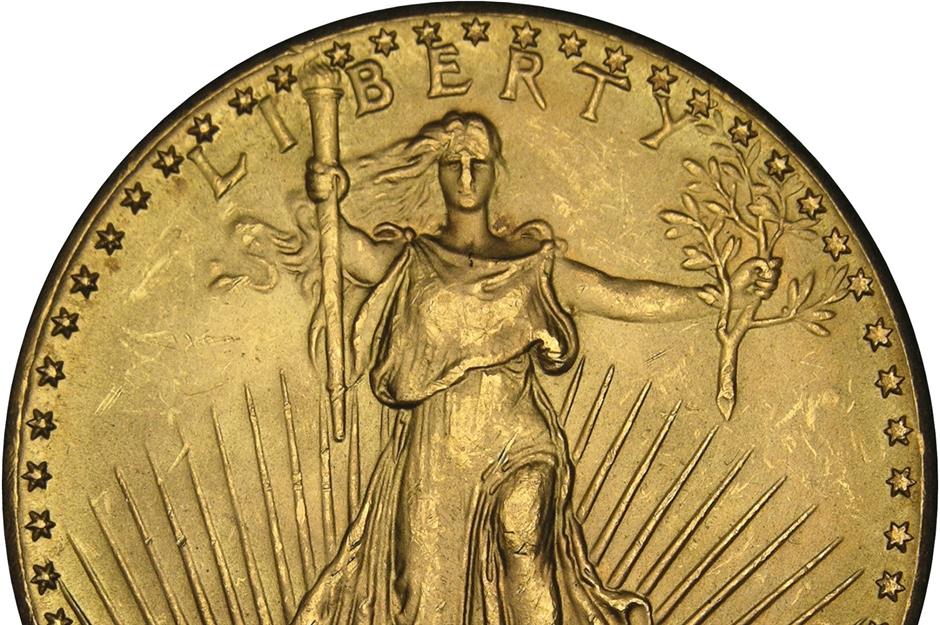
In 2007, Terrence Castle was digging a frog pond in his garden in London when he chanced across a buried glass jar. It contained 80 US Double Eagle coins dating back to 1854 with an estimated value of $99,000. Castle reported the find to the British Museum and, following an inquest, the coins were linked to a man named Max Sulzbacher, who lived in Israel. It turned out the coins had belonged to his ancestors, the Sulzbachers, a Jewish family who had fled to England in 1938 and settled in London.
17th-century gold coins found while digging

In 1940, Max's father Martin was sent to Australia after being declared an "enemy alien", so he deposited the gold coins in the bank. When the Blitz began, the family feared that their wealth and possessions might be raided by the Nazis, so Martin's brother withdrew the coins from the bank and hid them in the garden, without telling his brother. On his return to London in 1942, Martin found that his relatives had been killed by a bomb, and so he didn't know where the gold coins were hidden. He hired a metal detectorist who managed to find one jar of coins in 1952, but it wasn't until 55 years later that the second jar was finally found.
Cash found in the walls
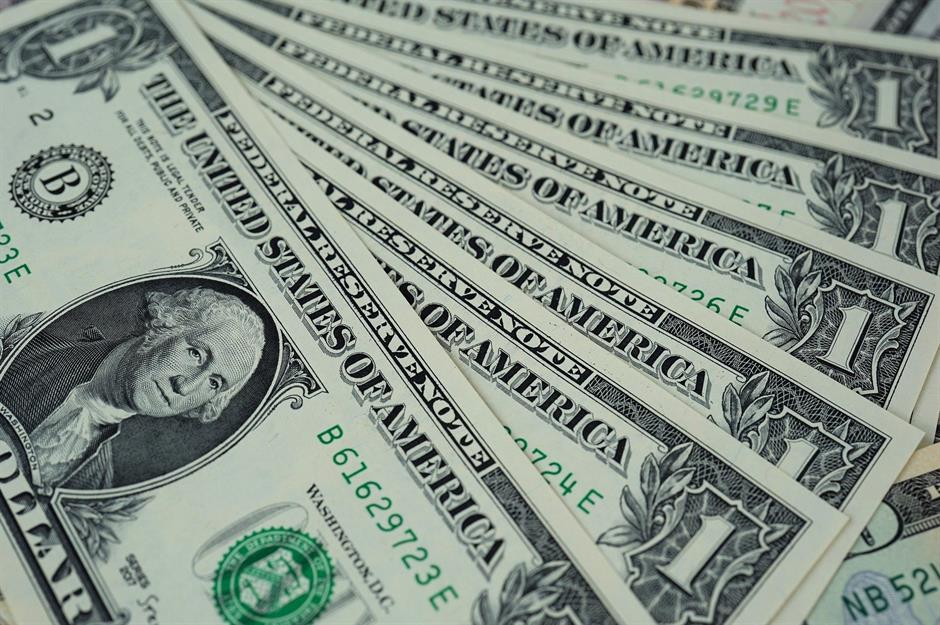
A contractor found Depression-era money in the walls of a property he was renovating near Lake Erie, Ohio in 2006. He alerted the homeowner, Amanda Reece, who offered 10% of the find as a reward, but he wanted to take 40%. Bob Kitts, the contractor, claimed she had changed her mind and sued for the entire sum of $182,000 under the "finders-keepers" law. Reece also obtained legal representation to defend the case and it went public.
Cash found in the walls

Once the story was in the newspapers, claimants came forward within 24 hours. It transpired that a wealthy businessman named Patrick Dunne had initially hid the money, and 86% of the find was labeled with 'P.Dunne'. It was ruled that the envelopes with his initial on them were to be shared between 21 distant relatives, each receiving $1,586. Reece gave up her claim and Kitts received $5,287.
Comments
Do you want to comment on this article? You need to be signed in for this feature